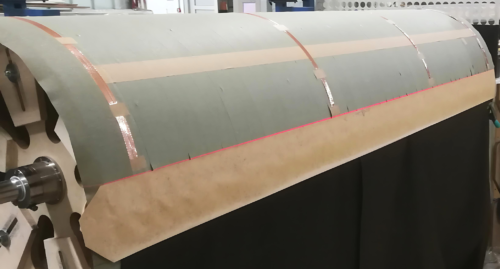Background
The future electrical network will have more sources feeding into the grid, e.g., wind, solar, and other energy producers. Shunt and Series Reactors are widely used in AC networks to limit overvoltage or shortcut currents in power transmission. With a growing number of high-voltage overhead lines in a fast-changing energy environment, both types of reactors play a key role in power quality and grid efficiency.
New Shield Development
In response to the increasing demand for new reactors and to fulfill the requirement to operate more effectively within a high magnetic field, Weidmann has developed the Rigid Metalized Carbon Paper Shield to meet the market requirements.
The rigid cylindrical shielding comprises a metalized layer sandwiched between two cylinders. The semi-conductive carbon paper layer, connected to a copper chord, prevents higher local electromagnetic losses when exposed to the magnetic flux, typical of the reactor design.
